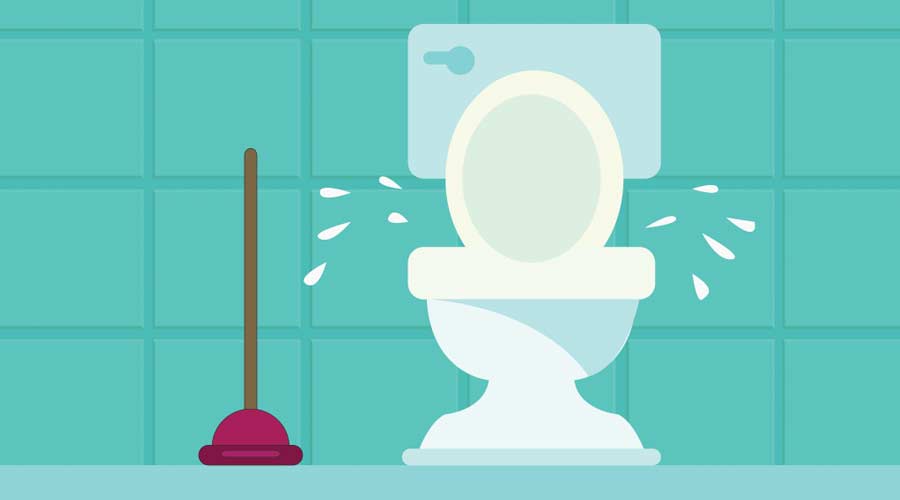
The list of potential restroom malodor sources does not stop there. Floor drains, particularly in older buildings, can cause problems if they dry out.
“Often in the summer, when the air conditioning is running, drains can become dry, which will release sewer gas,” says Moody. “Teaching customers to add water is a quick fix, but there are also products that can be put in the drain that act as an odor blanket. It evaporates slowly, over three or four months, and puts out a nice fragrance, too.”
Toilets that are no longer firmly seated against the floor can also present a challenge for end users. It’s often a result of the toilet losing its seal due to age, poor maintenance practices, or vandalism. Regardless, the gap allows fetid sewer gas to escape into the restroom and waft throughout the building. Resealing them should solve the issue.
Another common, and potentially dangerous source of malodor are used period products.
“Contact with blood is hazardous for custodians,” says Adelman. “Odors and visuals can also be nasty.”
Distributors should be prepared to provide advanced disposal systems that safely contain period products and their odors. These devices also make it safer and more pleasant for the maintenance team to remove contaminated garbage at the end of the day.
Finally, when it comes to next-level restroom care, there is a non-intuitive difference between products with odor-eliminating chemicals and odor counteractants.
“Counteractants actually kill the bacteria,” says Johnson. “Odor eliminators are perfume.”
Adelman recommends end users consider hypochlorous acid to combat restroom odors.
“Hypochlorous acid eliminates urine-based restroom odors,” he says. “Kill time is very fast and there is no residue that causes restroom floors to be sticky or attract more soils.”
Amy Milshtein is a freelancer based in Portland, Oregon. She is a frequent contributor to Sanitary Maintenance.
Restroom Floors That Draw Odors

 Celebrating BSCAI's 60th Anniversary eBook
Celebrating BSCAI's 60th Anniversary eBook The Down and Dirty on Cleaning in Virus Season
The Down and Dirty on Cleaning in Virus Season How Surfactant Use is Expanding in Commercial Cleaning
How Surfactant Use is Expanding in Commercial Cleaning